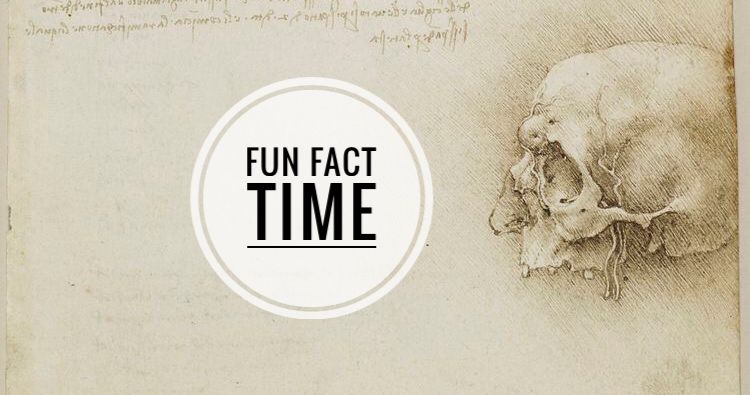Should Thor Really Have Gone for the Head?
Some weeks ago I was rewatching Infinity War, and what I really like about rewatching movies is that it gives me a chance to notice things which I didn't notice before. So if you've watched Infinity War and/or know what happens, then proceed with reading. If not, this is a 🚨 SPOILER ALERT 🚨 for you.
**
**
**
**
***
At the end of the movie, Thor returns with the Stormbreaker (cool name for an axe) in a totally epic scene. He stabs Thanos in the chest — I bet he was going for the heart — and to ensure that it's the end of that purple world destroyer, he pushes the axe a little deeper. Great, right? He should've died, right? But no, Marvel wants to break our hearts, so Thanos looks at Thor and says, "You should have gone for the head," and the rest is history.
Now the question is: should Thor really have gone for the head? The answer is no, not necessarily. I mean, there's always the obvious thing that many superheroes miss when they're too busy doing superhero stuff. In this case, it's chopping off Thanos' arm or forearm. I mean the axe that could penetrate his thick skin, his strong muscles and possibly his ribs surely could have also made it through his elbow joint and yay, half of the universe's population would remain alive and our hearts would be intact.
But let's use the superhero logic here, and make it more complex for ourselves to save the world. Besides the head, what else should Thor have gone for? The answer to this requires a basic understanding of movement and how it occurs.
Movement is defined a change of place or position or posture, and while this definition is simple, the moving itself is not. It requires the integrity of the cerebral cortex, the basal ganglia, the cerebellum, the motor tracts, the spinal cord and its nerves as well as the muscles. For you to carry out a movement successfully, all these must work in coordination, each playing a specific role in planning, performing or even correcting movements.
The cerebral cortex for example is considered the higher center of control of the voluntary movements. It's where you find the motor areas (the primary, premotor and supplementary areas), which are responsible for planning and execution of movements. And when I say 'movement' that includes talking too, because even spoken speech is partially a motor process.
The basal ganglia are primarily responsible for processing the cognitive information that helps us decide what to do in order to convert ideas and thoughts into voluntary movements, using the help of its connections with the cerebral cortex. This may sound complicated, but imagine that you're Harry Potter and as you are walking, you see a Death Eater approaching you. Almost without thinking, you'll bring out your wand, point it at the Death Eater and cast a spell, right? Seeing the Death Eater was all what your basal ganglia and cerebral cortex needed to go "Hey, that's one of the bad guys, I'd better hex the heck out of 'em rn," and then do just that.
The basal ganglia are also responsible for initiating and regulating certain movements that are performed subconsciously, such as the swinging of your arms during walking.

It seems that my friend Johann is back after a long vacation to tell us a fun fact.
"One of the neurotransmitters in the basal ganglia is dopamine. If the amount of dopamine there progressively decreases, this could lead to Parkinson's disease whose symptoms include tremors, difficulty walking and speech changes."
Thanks, Johann.

As for the cerebellum, it plays a very important role in motor control, and I have always imagined it as that insufferable kid (cerebellum = little brain, so it's a kid) who just keeps bossing everyone around. To a certain extent, that's what the cerebellum does exactly.
For example, it has a servo-comparator function, meaning that it receives two types of information and compare them with each other. The first type is the intended plan of movement from the cerebral cortex, and the second is the actual movement that is performed. The cerebellum compares these two with each other and sends corrective signals if an error is detected to make sure that the muscles are performing the movement we want.
It also has a damping function to prevent exaggerated muscular activity, which is similar to the role that brakes play in a car. If I ask you to touch your nose, and you're able to do it accurately and precisely without an overshoot of your hand, then you should thank your cerebellum because it tells your hand where to stop. Also, you looked funny touching your nose like that. :)
The cerebellum is important for balance and posture regulation as well, and I believe that's what it's most known for.
Now back to Thanos, and please note that I'm assuming his anatomy and physiology is similar to ours. For him to snap his finger, his brain makes a motor plan and executes it by sending down a signal via the motor tracts which relay in the spinal cord. The signal is then transmitted through certain spinal nerves (C5-T1) that form a network of nerves called the brachial plexus which supplies the arm and the hand. After that the signal reaches the intended muscles through the nerves innervating them, and click... half of the universe is gone, simple as that.
So of course, Thor could have gone for the head or for the arm itself as I've mentioned, but do you know what else he could have injured? The spinal cord, anywhere above the level of the 5th cervical nerve. It would disrupt the signals which the spinal cord sends to different areas of the body, including the hands, and will lead to paralysis if the Stormbreaker does enough damage.
Just imagine if Thor appeared behind Thanos and was like, "Hey, it's me!" and then stabbed him in the back. It would be a nasty surprise for Thanos, so it's great for the dramatic effect which superheroes adore, and it would also save the world. Too many things would have changed if Odin had made anatomy mandatory in Asgard, don't you think?
Anyway, thank you for reading this chapter, and I hope you enjoyed it. Let me hear your thoughts in the comments, and if you think there's another way that could have stopped Thanos.
And if you're looking for a place that provides scientific answers to your fictional questions (something like this chapter, but it's a full book and you actually get to ask the questions you want, not have me discuss the random topics I feel like discussing), then I highly recommend The Science of Fiction by raconsell . Check it out, you'll like it.
Bạn đang đọc truyện trên: AzTruyen.Top